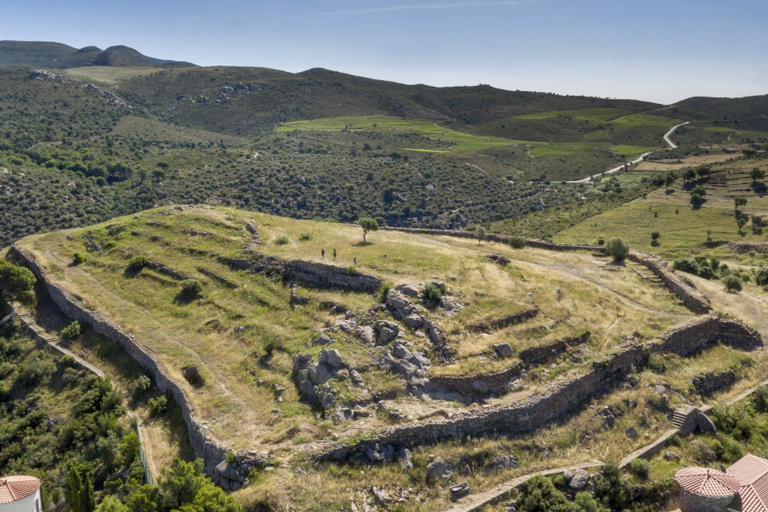
Introduction
A Site of National Cultural Interest (BCIN), the village of Puig Rom, or the Visigothic Castrum as it is also known, is an exceptional monument. Among the comparable Visigothic fortifications, it is the best preserved and the one that presents the best maintained constructive technique. From the typological point of view, there are no other fortresses known in the peninsula with which it can be compared. It dates from the year 650-700 and inside the enclosure is located an archaeological site vital for the study of a little known period of the history of Roses and the whole of the country.
Many ceramic remains, bronze pieces and iron objects, particularly agricultural tools, have been found within the interior, as well as the walls that formed the houses and silos, all of which allows us to get close to the lives of its inhabitants. Of oval plan, the village is surrounded by a remarkable wall, made from large blocks of granite, of which, at the moment, only a single access gate is known. This is oriented towards the south and is flanked by two square towers. In spite of the solidity of the fortification, the best preserved part is the one that is found to the east.
Belonging to the municipality, access is free throughout the year.